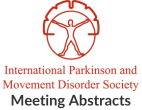Phenotype characteristics of ANO10 mutation carries: a case series from Serbia and a systematic review of the literature
Objective: To describe Romani patients with ANO10 mutation diagnosed at a single-center in Serbia and to provide a systematic literature review on ANO10 phenotype and…Hyperintensity in Middle Cerebellar Peduncles, an infrequent and reversible finding in Marchiafava-Bignami Disease.
Objective: We present a case of Marchiafava-Bignami Disease (MBD), where reversible hyperintensity in Middle Cerebellar Peduncle (MCP-sign) is observed. Background: MCP sign is an infrequent…Phenotype-genotype correlation in a case series from South Spain of Hereditary Spastic Paraplegia 7 (SPG7)
Objective: To describe the phenotype and genotype of patients with confirmed diagnosis of SPG7 Background: Coarelli et al described the possible correlation between genotype and…Reliability and Validity of the Greek Translation of the Scale for Assessment and Rating Ataxia in Ataxic Children
Objective: Translation and Cross-cultural adaptation of the Scale for Assessment and Rating Ataxia (SARA) in Greek ataxic pediatric population. Background: Ataxia in the pediatric population…Clinical presentation of coexistence of Spinocerebellar ataxia (SCA14) gene duplication variant in association with Spinocerebellar Ataxia (SCA8) gene mutation in a same patient.
Objective: First case report to demonstrate an overlap of two autosomal dominant ataxia's (SCA8 and SCA14) in same patient expanding the clinical spectrum of spinocerebellar…Prevalence and Clinical Characteristics of Autosomal Dominant Spinocerebellar Ataxia in a Large Canadian Cohort from Ontario
Objective: To describe the prevalence and clinical characteristics of Autosomal Dominant (AD) Spinocerebellar Ataxias (SCA) in a Canadian cohort of patients in Ontario. Background: SCAs…A novel GRM1 variant associated with autosomal dominant cerebellar ataxia (ADCA)
Objective: To present a unique case of ataxia that adds to the genotypic variants associated with the GRM1 gene implicated in SCA44 Background: Heterozygous dominant…EATING HABITS AND NUTRITIONAL STATUS OF PATIENTS WITH HEREDITARY ATAXIAS IN A NORTHEAST BRAZILIAN POPULATION
Objective: This study aimed to investigate the eating habits, nutritional and metabolic status in patients with hereditary ataxia (HA) in Northeast Brazil. Background: Studies on…Atypical presentation of Ataxia telangiectasia masquerading as Parkinson’s Disease
Objective: NA Background: Parkinson's disease comprises of rest tremor, bradykinesia as well as difficulty with gait and abnormal posture. Certain neurological disorders may mimic Parkinsonism…Distinct impulsive traits in cerebellar ataxia and Parkinson’s disease
Objective: To determine the differences in impulsive personality traits between patients with cerebellar ataxia (CA) and Parkinson’s disease (PD). Background: Impulsivity is a multifaceted construct…
- « Previous Page
- 1
- …
- 9
- 10
- 11
- 12
- 13
- …
- 27
- Next Page »
